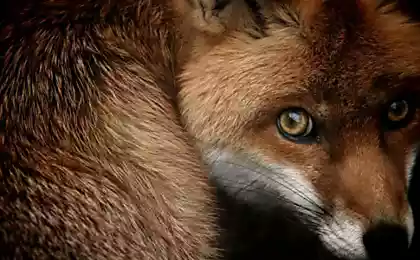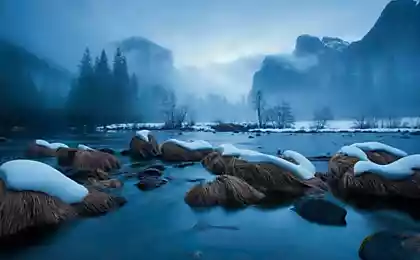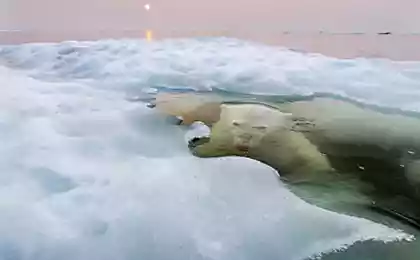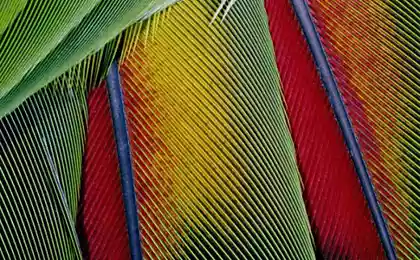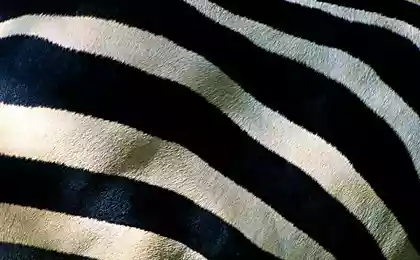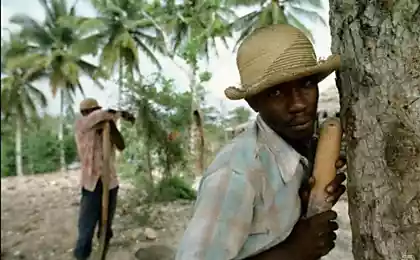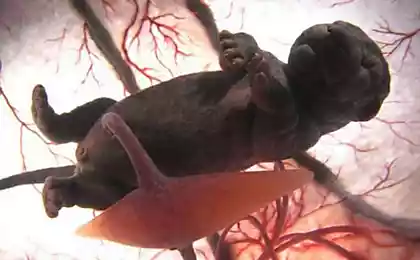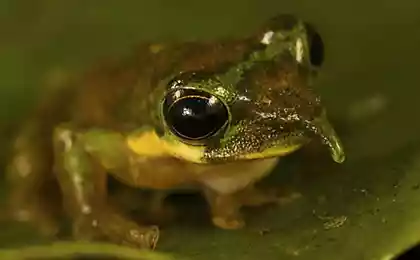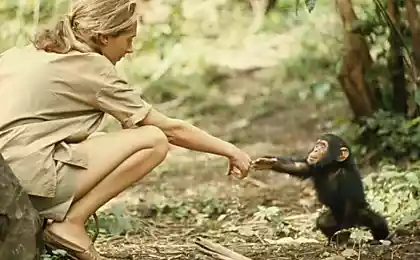1777
A selection of photos of August from National Geographic
National Geographic magazine has published the best shots in August from every corner of the globe. Look, it's very beautiful!
Railway station in Mumbai

Beaver, Vancouver
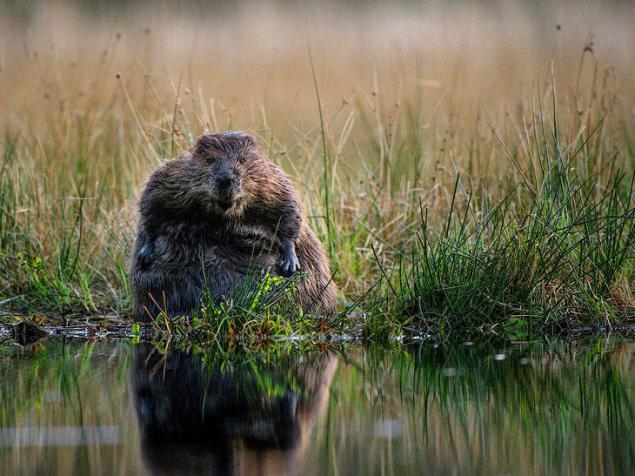
Beaver - the largest rodent fauna of the old world and the second largest rodent after capybaras. (Photo by Paul Colangelo):
Little auks, Svalbard

A lot of little auks are suffering from pollution, particularly from the accidents of oil tankers. However, because of their specialization in crustaceans, they are not very sensitive to a reduction in fish populations due to fishing rights. (Photo: Paul Nicklen):
Tiger in the Brahmaputra valley

Tiger Stripes good disguise it in the tall grass. (Photo: Sandesh Kadur):
Baiterek Tower, Astana
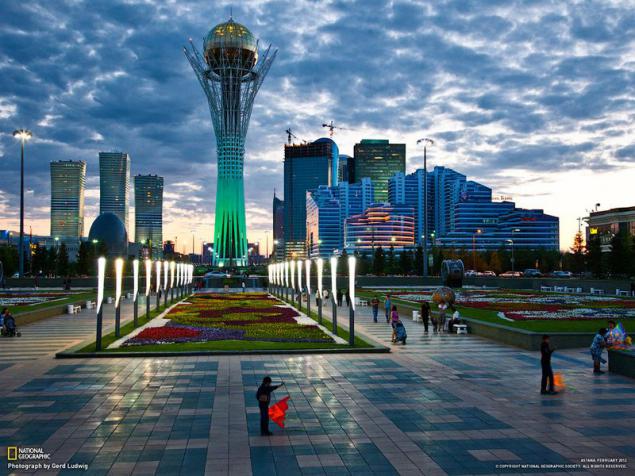
This monument in the capital of Kazakhstan is one of the main attractions of the city. The height of buildings is 97 meters with the ball, crowning the construction - 105 meters. The diameter of the ball - 22 meters. (Photo: Gerd Ludwig):
Yakarsky Caiman, Brazil

With the onset of the dry season, leaving the small schools of fish ponds Pantanal and head to deeper rivers, often falling straight into the jaws of a hungry caimans. (Photo Luciano Kandisani):
Power "Ratcliffe-on-Soar," UK
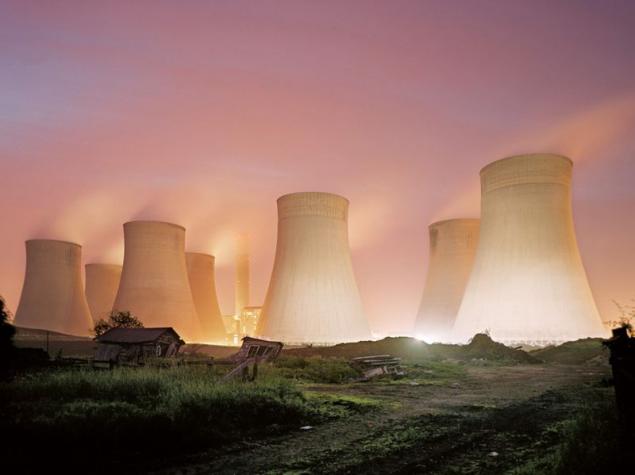
"Ratcliffe-on-Soar," coal power plant produces electricity, which is enough for about two million people. The building dominates the station Notting Hampshire for more than forty years - but people rarely pay attention to it. (Photo by Toby Smith):
Lion "nursery" Serengeti
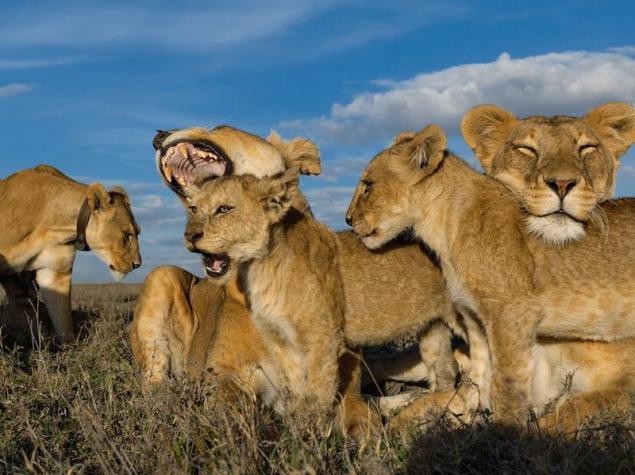
Grown young, these cubs of the pride Vumbi live together in a "manger": the female of the pride, united aim to cultivate a new generation, caring and looked after and their, and others' offspring. (Photo by Michael Nichols):
Dive into the cenote Holtun Mexico
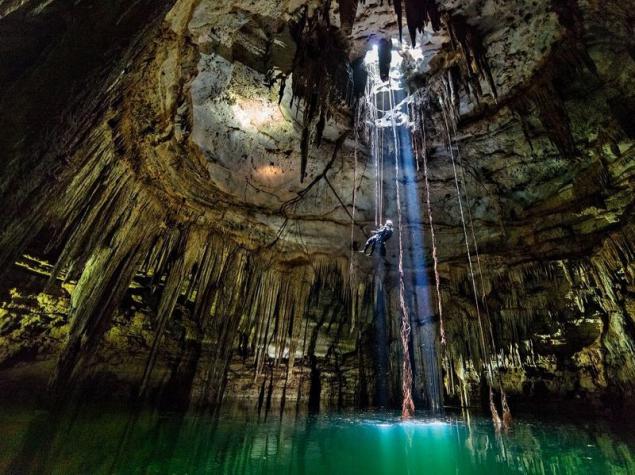
Archaeologist Guillermo de Anda immersed in the cenote Holtun July 19, a few minutes before the sun reaches its zenith. Twice a year the star occupies the highest point in the sky - and at this point the light penetrates the water at the bottom of the cenote at right angles, and the shadows disappear. De Anda believes that on the surface of the ancient Maya built a structure that just "caught the" rays of light. (Photo: Paul Nicklen):
Red-eyed tree frog, Costa Rica
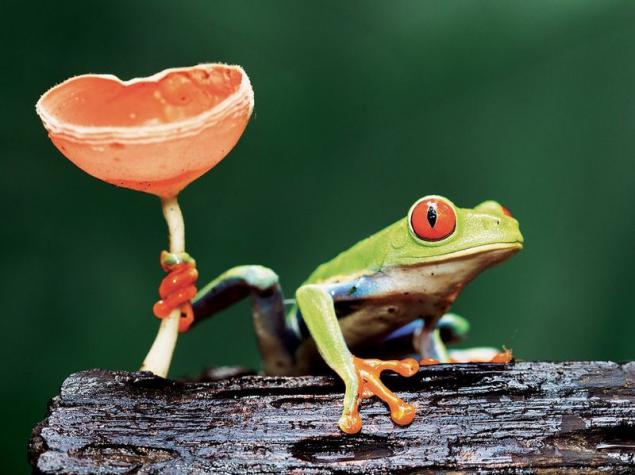
During a photo tour of Costa Rica Megan Lorenz really wanted to take pictures of red-eyed tree frog. Toward dusk luck he smiled at her: frog climbing on a nearby branch. Reeling, he grabbed Stipe to balance it, and then quickly crawled away. (Photo by Megan Lorenz):
Badgers, Finland

Summer night, the family of badgers jib sneaks into the kitchen through its own tunnel that goes into the fireplace. Fagerstromu took four years to catch on film shy nocturnal animals. For this picture, he set the camera on the windowsill, and the hours standing on a ladder outside the window, waiting for when it will be possible to press the shutter using a remote control. (Photo Kai Fagerstroma):
Fox-moth, Kamchatka

"Kronotsky State Nature Reserve. This fox I met the next day after a heavy storm. All night long chalk blizzard and heavy snowfall was. In the morning, as if in compensation for yesterday's concerns, it was remarkably quiet and sunny. Fire beautiful light dancing trot moved along the snow-white veil, which was almost no trace. During movement it is accelerated, then warily froze, catching the smell under the snow, "- says the photographer Gennady Yushin. (Photo by Gennady Yushin):
Gentoo penguin, Antarctica
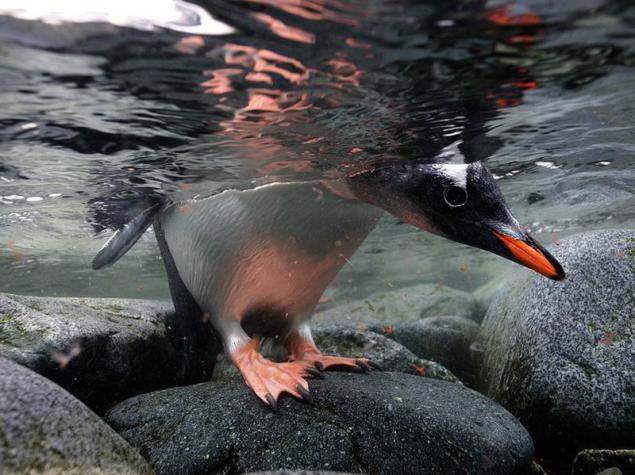
Subantarctic penguin does not dare to go: in the water it can wait for the leopard. The penguin is in the shallows, trying to assess the situation. (Photo: Paul Nicklen):
Cenote, Mexico
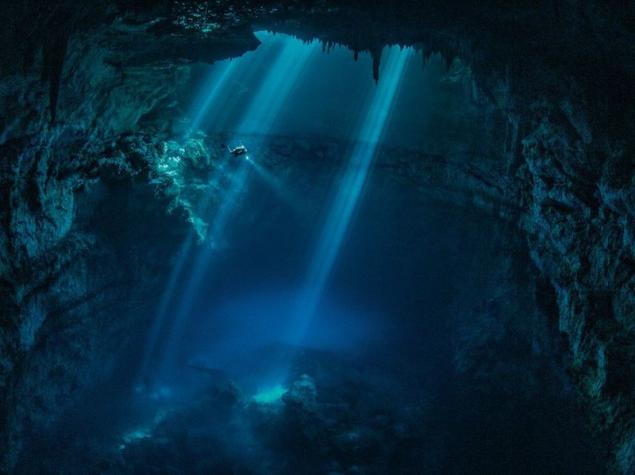
A diver explores Cenote not far from the ruins of Tulum - the ancient Mayan city. (Photo: Paul Nicklen):
Cubs yakarskogo caiman, Brazil
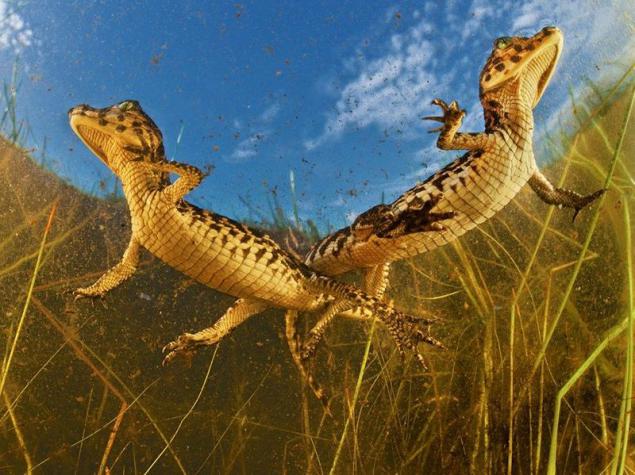
The two-week yakarskie spectacled caiman are barely two dozen centimeters. Happy kids are hiding from predators among the high marsh grasses, and, sensing danger, publish cry of alarm, calling on the help of adults. (Photo Luciano Kandisani):
Ghost Bear, Canada

Kermode bear population numbers from 400 to 1000 individuals. Bears preserved today thanks in part to Indian tribes, which are always kept secret the existence of the whites of the hunters. (Photo: Paul Nicklen):
Beaver, France

Beaver goes to their dam on the river Loire, holding in his mouth poplar branch for dinner. A century before hunters nearly exterminated the views around the world: in 1200 there were only individuals. Today, the population of these protected rodents rose to one million, and they live mostly in Europe. (Photo by Louis-Marie Pro):
Owlet, Russia

"Wandering through the hills in search of mushrooms, he heard a squeaky cry snowy owl. So somewhere there is her chicks. Inspects - nothing. And then notice frightened, but a close look. Owlet. It seems to be different in color from the surrounding environment, but it is very difficult to notice. And if not for the bright yellow, great big eyes ... "- says the photographer. (Photo):
Fox sparring Alaska
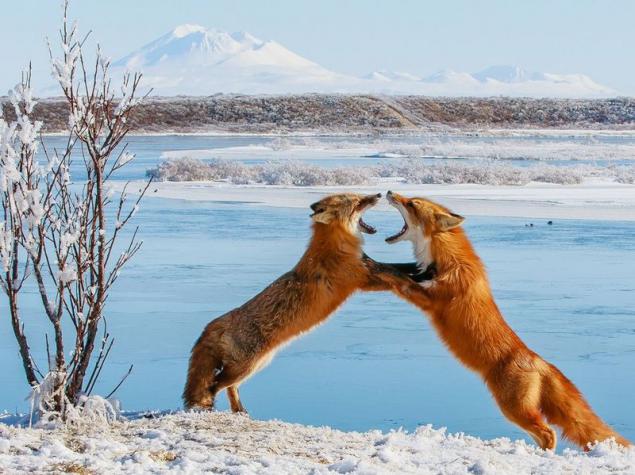
(Photo by Robert Dreeszen):
A source:
Railway station in Mumbai

Beaver, Vancouver

Beaver - the largest rodent fauna of the old world and the second largest rodent after capybaras. (Photo by Paul Colangelo):
Little auks, Svalbard

A lot of little auks are suffering from pollution, particularly from the accidents of oil tankers. However, because of their specialization in crustaceans, they are not very sensitive to a reduction in fish populations due to fishing rights. (Photo: Paul Nicklen):
Tiger in the Brahmaputra valley

Tiger Stripes good disguise it in the tall grass. (Photo: Sandesh Kadur):
Baiterek Tower, Astana

This monument in the capital of Kazakhstan is one of the main attractions of the city. The height of buildings is 97 meters with the ball, crowning the construction - 105 meters. The diameter of the ball - 22 meters. (Photo: Gerd Ludwig):
Yakarsky Caiman, Brazil

With the onset of the dry season, leaving the small schools of fish ponds Pantanal and head to deeper rivers, often falling straight into the jaws of a hungry caimans. (Photo Luciano Kandisani):
Power "Ratcliffe-on-Soar," UK

"Ratcliffe-on-Soar," coal power plant produces electricity, which is enough for about two million people. The building dominates the station Notting Hampshire for more than forty years - but people rarely pay attention to it. (Photo by Toby Smith):
Lion "nursery" Serengeti

Grown young, these cubs of the pride Vumbi live together in a "manger": the female of the pride, united aim to cultivate a new generation, caring and looked after and their, and others' offspring. (Photo by Michael Nichols):
Dive into the cenote Holtun Mexico

Archaeologist Guillermo de Anda immersed in the cenote Holtun July 19, a few minutes before the sun reaches its zenith. Twice a year the star occupies the highest point in the sky - and at this point the light penetrates the water at the bottom of the cenote at right angles, and the shadows disappear. De Anda believes that on the surface of the ancient Maya built a structure that just "caught the" rays of light. (Photo: Paul Nicklen):
Red-eyed tree frog, Costa Rica

During a photo tour of Costa Rica Megan Lorenz really wanted to take pictures of red-eyed tree frog. Toward dusk luck he smiled at her: frog climbing on a nearby branch. Reeling, he grabbed Stipe to balance it, and then quickly crawled away. (Photo by Megan Lorenz):
Badgers, Finland

Summer night, the family of badgers jib sneaks into the kitchen through its own tunnel that goes into the fireplace. Fagerstromu took four years to catch on film shy nocturnal animals. For this picture, he set the camera on the windowsill, and the hours standing on a ladder outside the window, waiting for when it will be possible to press the shutter using a remote control. (Photo Kai Fagerstroma):
Fox-moth, Kamchatka

"Kronotsky State Nature Reserve. This fox I met the next day after a heavy storm. All night long chalk blizzard and heavy snowfall was. In the morning, as if in compensation for yesterday's concerns, it was remarkably quiet and sunny. Fire beautiful light dancing trot moved along the snow-white veil, which was almost no trace. During movement it is accelerated, then warily froze, catching the smell under the snow, "- says the photographer Gennady Yushin. (Photo by Gennady Yushin):
Gentoo penguin, Antarctica

Subantarctic penguin does not dare to go: in the water it can wait for the leopard. The penguin is in the shallows, trying to assess the situation. (Photo: Paul Nicklen):
Cenote, Mexico

A diver explores Cenote not far from the ruins of Tulum - the ancient Mayan city. (Photo: Paul Nicklen):
Cubs yakarskogo caiman, Brazil

The two-week yakarskie spectacled caiman are barely two dozen centimeters. Happy kids are hiding from predators among the high marsh grasses, and, sensing danger, publish cry of alarm, calling on the help of adults. (Photo Luciano Kandisani):
Ghost Bear, Canada

Kermode bear population numbers from 400 to 1000 individuals. Bears preserved today thanks in part to Indian tribes, which are always kept secret the existence of the whites of the hunters. (Photo: Paul Nicklen):
Beaver, France

Beaver goes to their dam on the river Loire, holding in his mouth poplar branch for dinner. A century before hunters nearly exterminated the views around the world: in 1200 there were only individuals. Today, the population of these protected rodents rose to one million, and they live mostly in Europe. (Photo by Louis-Marie Pro):
Owlet, Russia

"Wandering through the hills in search of mushrooms, he heard a squeaky cry snowy owl. So somewhere there is her chicks. Inspects - nothing. And then notice frightened, but a close look. Owlet. It seems to be different in color from the surrounding environment, but it is very difficult to notice. And if not for the bright yellow, great big eyes ... "- says the photographer. (Photo):
Fox sparring Alaska

(Photo by Robert Dreeszen):
A source:
